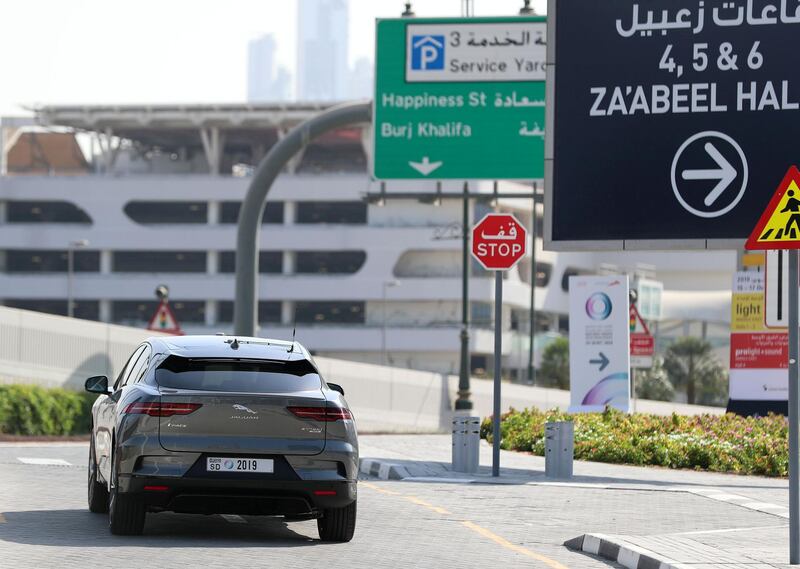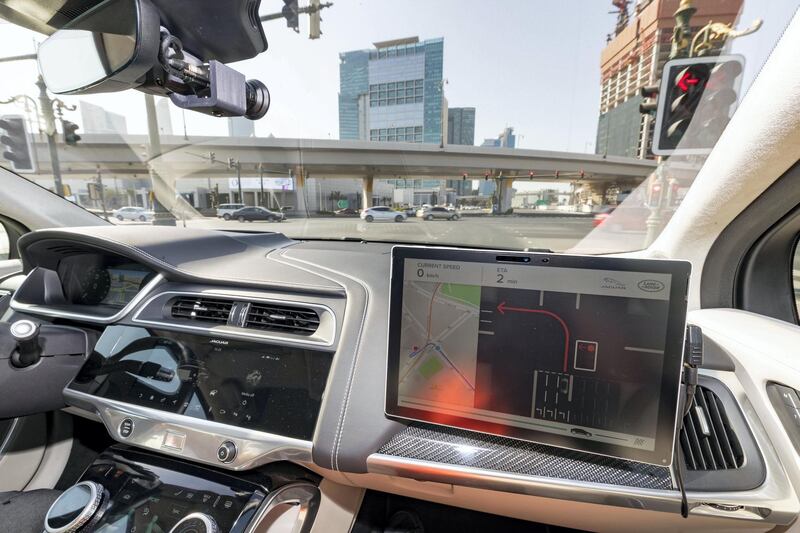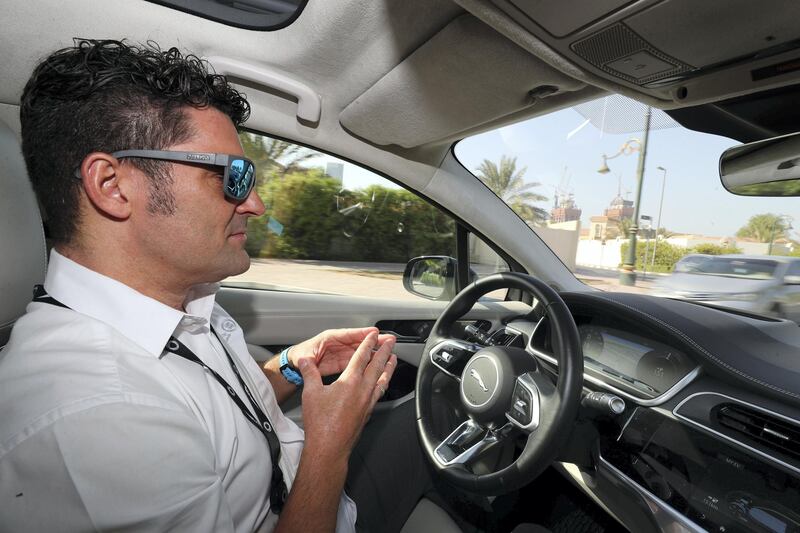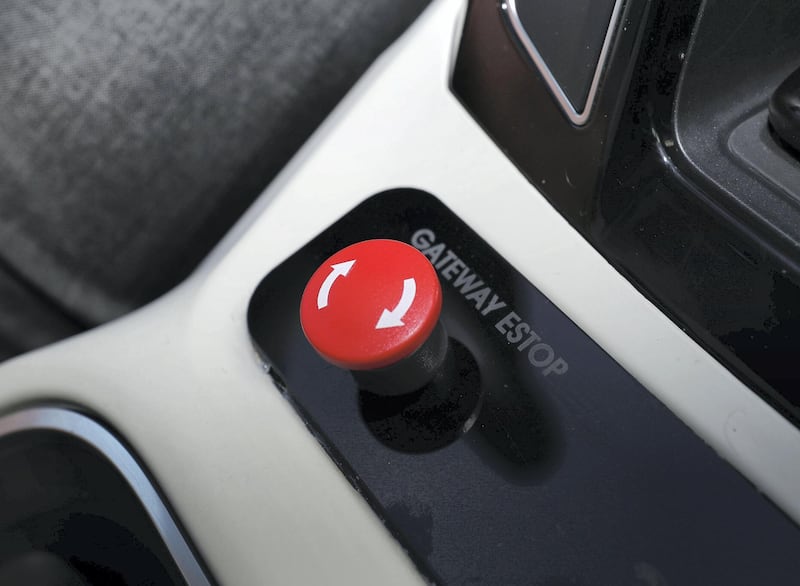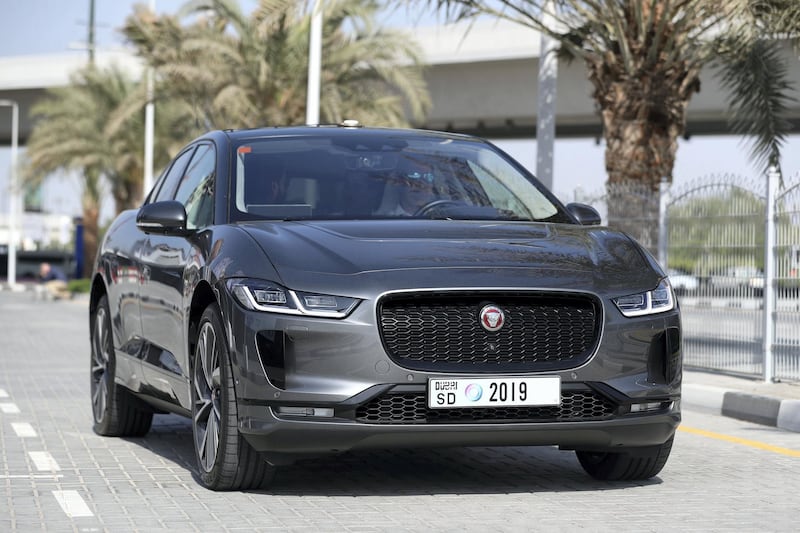As the wheel turns and the driverless Jaguar iPace accelerates away from the traffic lights, sitting in the passenger seat is an unnerving experience and a first on the streets of Dubai.
On the opening day of the Roads and Transport Authority's Congress for Self-Driving in Dubai, the autonomous vehicle demonstration offered a glimpse into the future.
Although fully autonomous vehicles are some years away, a prototype allowing a driverless journey along a preprogrammed route with a safety driver at the wheel took to the roads near Dubai World Trade Centre.
“The vehicle is one of a kind, but we expect to see more cars like this in future,” said Allan Howling, autonomous driving engineer with Jaguar Land Rover. “How fast that happens depends on legislation and customer acceptance, not just the technology.”
A prototype of the fully electric Jaguar iPace was modified specifically for the RTA exhibition to show how far technology has developed. The car is equipped with radar cameras on the front and back, another camera for traffic-light recognition and a roof-mounted GPS receiver.
Current driverless vehicles under test have differing levels of autonomy.
A level one autonomous vehicle may have driver-assist functions such as cruise control, while level four allows the driver to be doing other things, such as sleeping or reading a book while the car is driving in a designated area, such as a single lane on a motorway. Drivers of a level four autonomous car can also regain manual controls at any time.
From there, autonomous driving is likely to progress to wider use on inner city roads.
Level five vehicles are the driverless utopia of travel, with no driving seat, steering wheel or manual controls. That option is some years away.
“If we were doing more driving around Dubai, we would need an awful lot more sensors,” said Jim O’Donoghue, a Jaguar safety driver who was on hand to take back control of the iPace should anything go wrong.
"We've assessed this route around Zabeel so we can use minimal sensors. It has been challenging to take the technology into an electric car, but we believe this will be the future of driving. Using an engine is easier than an electric motor because automatic braking and accelerating is a smoother process."
Artificial intelligence in UAE
[ World's first artificial intelligence university to open in Abu Dhabi ]
[ Artificial intelligence isn't coming to the UAE - it is already here ]
[ Hi-tech bid to predict traffic could cut congestion and reduce pollution in Dubai ]
Fully charged and with air-conditioning running to counteract the intense Dubai heat, the iPace has a range of about 250 kilometres. In cooler climates, such as the UK, it can reach 420km.
Although the driverless revolution may be some way off, the RTA envisages 25 per cent of all trips in Dubai will be autonomous by 2030.
Six-seater driverless electric pods were on show at the two-day conference, to reveal how people could be transported around the city in future.
"This technology will slowly progress over the next five to 10 years," Mr O'Donoghue said. "We know that 94 per cent of accidents are caused by driver error so this will improve safety and reduce congestion."

